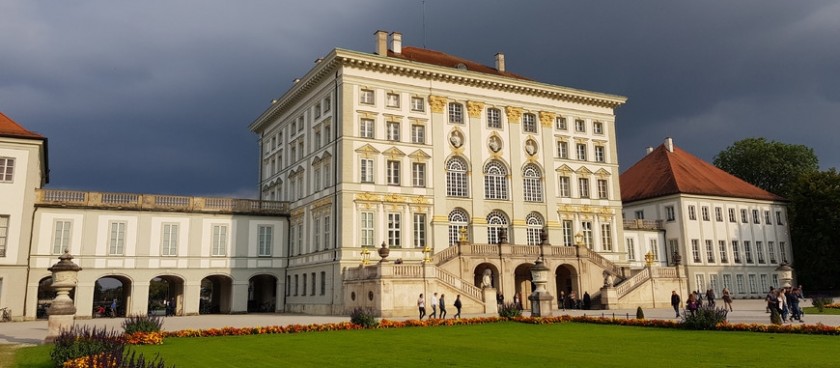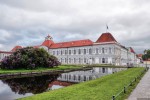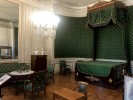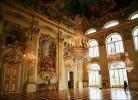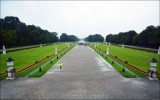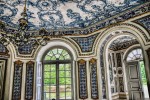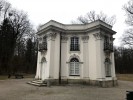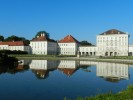- #DE45
- Schloß Nymphenburg 1, 80638 München, Germany
- +4989179080
- sgvnymphenburg@bsv.bayern.de
- http://www.schloss-nymphenburg.de/
- Working hours*:
April-15 October: from 9.00. until 18.00.
October 16-March: from 10.00 to 16.00.
Chapel: April-October 15 - daily from 9:00 to 18:00. - Prices*:
April 1 to mid-October - 15 euros, concessionary - 13 euros.
Mid-October to March - 12 euros, preferential - 10 euros. - * - opening and closing times as well as entrance prices, are subject to alterations without notice. Visitors are advised to check before visiting.
- To visit, you must pre-book a time on the official website.
- 48.1582890, 11.5033358 Copy to clipboard Copy
-
#Viewpoints
The couple had been waiting for the heir to the throne with growing anxiety for ten years. But there was no limit to the joy after the event in 1662.
The elector decided to build the palace to the west of Munich, in the royal estates of Kemnathen (Hofmark Kemnathen). In 1664, the court architect Augustin Barelli began construction. Thirteen years later, the "Lust Schloss Nymphenburg" was completed. Initially, the castle really looked more like a fortress. A large cubic building, outbuildings and a small geometrically laid out park.
It is already the heir, Max Emmanuel, the hero of the then celebration during his reign from 1680 to 1726, he completed the palace and expanded the park ensemble to the size that we see today.
The Nymphenburg Palace with the adjacent park and park castles is the largest palace ensembles in Europe. The length of the complex from north to south is 632 meters, which exceeds the size of Versailles.
The construction was supervised by another court architect, also Italian, Enrico Zuccarelli. At the beginning of the 18th century, Emmanuel II was, however, not up to the palace. Moreover, during the Spanish Crown War, after the defeat in the battles of Munich, he was forced to flee from Bavaria and spend 14 years in Paris. But after his return, Max Emmanuel considered it a matter of honour to build a palace, no worse than the French Versailles.
The son of Emmanuel II, Elector of Bavaria Karl Albrecht (1726 bis 1745) and since 1742 Kaiser Karl VII, was inspired by the idea of creating Karl's City (Karlstadt) from Nymphenburg and continued the expansion of the castle ensemble. The Nymphenburg Palace and rotunda were to form the centre of the town. Four more small castles were built in the park. The favourite park palace of Charles VII was Amalienburg, richly decorated in white and silver colours in the Rococo style.
Under the successor of Kaiser Charles VII, Elector Max III, the ceremonial hall of the palace was decorated in the Rococo style.
In addition, the porcelain manufactory of Nymphenburg received its current place under him. Max III added sculptures of the most important gods of Olympus to the park's decorations.
Elector Karl Theodor, whose years of rule fell on the times of the French Revolution, allowed access to the park for the people, to avoid unnecessary unrest. After Bavaria became a kingdom at the beginning of the 19th century, King Max I rebuilds some of the rooms of the palace and renews the furnishings in the classicist style.
And after the death of the first king, Nymphenburg remained the favourite residence of the Bavarian kings.
In 1845, Ludwig II, the famous king of Bavaria, famous for the construction of the Neuschwanstein Palace, was born here. Today, 21 rooms are open for visiting in the Nymphenburg castle, among them the ceremonial stone hall, decorated with murals by Zimmermann, the apartments of the northern wing, the southern wing with the famous gallery of beauties of King Ludwig I of 36 portraits of the artist Stieler, the apartment of Elector Karl Theodor, the queen's chambers, the Chinese room with varnished coatings.
The collection of the Stables Museum, located in the former building of the royal stable, consists of royal and county carriages, princes' sleighs, lady stretchers, saddles and much more. The Nymphenburg Porcelain Museum located on the second floor of the Stables Museum.
Founded in 1743 by Elector Max III, the porcelain manufactory lasted until the 20th century. The success of the Nymphenburg Porcelain Factory was the work of the master Franz Anton Bustelli. His porcelain figurines are the main pride of the museum today. In addition, the museum has a collection of royal table china, as well as a collection of unique art Nouveau pieces.
Park palaces
In addition to the main palace, four small park castles are open to visitors.
Magdalenenklause
The Magdalenenklause was erected by order of Max Emmanuel. This brick one-story building was conceived by him as a place for prayer and solitude. One part is the chapel of Mary Magdalene, and the second houses a very modest, monastery-style apartment. The Magdalenenklause was specially placed right in the middle of a densely overgrown forest to enhance the feeling of the hermitage. The elector never saw the castle, completed in 1728.
Amalienburg
A completely different castle was built directly opposite the Magdalenenklause. was built in 1739 by Karl Albrecht for his wife Amalia as a hunting and entertainment castle. He is one of the finest examples of European Rococo. The central part of the building is occupied by an oval mirrored office. The blue study and restroom make up the southern part, while the hunting and pheasant rooms make up the northern part. There is a dressing room, a dog room, and a kitchen.
Badenburg
Badenburg, as the name implies, is a place for royal bathing, occupying the southern part of the Nymphenburg park ensemble. It has a bath, heated pool, dressing room, kitchen and royal suite on the second floor.
Pagodenburg
This graceful house - a castle built in the 18th century, is located in the northern part of the park. The first floor is painted in blue and white exotic floral ornaments, according to the then fashion, in the Chinese style, the second floor covered with Chinese silk wallpaper with birds of paradise, trimmed with precious woods. The building itself does not at all resemble a pagoda.
Not far from the Nymphenburg Palace is a botanical garden.
You can use the App "Schloss Nymphenburg" for walks in the park free, available for download.
Three virtual routes through the park, operating via GPS, have been developed, information on 27 objects of the park.
How to get there
The Nymphenburg Palace is located in the western part of Munich and can be easily reached by any means of transport.
By public transport
By underground: lines U1 or U7 to the Rotkreuzplatz stop, then on foot or by tram 17 to the Schloss Nymphenburg stop.
By city train: S-Bahn Lines S1, S2, S3, S4, S6 or S8 to the Lime stop. This is the entrance from the side of the park. After exiting the car, you need to go down into the tunnel and go to the opposite side of the railway tracks, then turn right, walk to the gate of the Nymphenburg park.
By tram: Route 17 to the stop at Nymphenburg Palace.
By car
In front of the Nimferburg Palace there is a free parking lot with 450 spaces.
By taxi
Munich's Nymphenburg Palace is an easy Uber taxi ride away.
